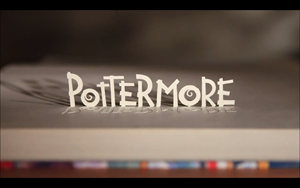 The Bookseller reports that the Pottermore web site, the home of the Harry Potter e-book sales, is about to undergo a significant revamp. The site will be dropping the game elements, allowing search engines to index the site’s content, and making it mobile-friendly. The changes will move the site away from trying to appeal to younger readers in favor of catering to the young adults who are the series and site’s core audience.
The Bookseller reports that the Pottermore web site, the home of the Harry Potter e-book sales, is about to undergo a significant revamp. The site will be dropping the game elements, allowing search engines to index the site’s content, and making it mobile-friendly. The changes will move the site away from trying to appeal to younger readers in favor of catering to the young adults who are the series and site’s core audience.
[Pottermore CEO Susan] Jurevics said the changes had been driven by identifying the core users of the site, how technology had developed since its original launch (in April 2012), and the need to reflect that the Harry Potter universe is no longer confined to the original seven books. A stage play is currently under development, and the first of three new films, “Fantastic Beasts and Where to Find Them”, is to be released next year.
Apart from the new target demographic, the site changes are meant to reflect the growth of tablets and smartphones as a way many readers consume content. The new version of the site will be directed at smartphones first, rather than desktops.
There are also hints that there might be some changes in store for the way the site sells the Harry Potter e-books and digital audiobook downloads.
Pottermore will continue to sell the Harry Potter e-books and digital audio downloads, but Jurevics signalled that this area of the site was also under development. She said: “There is a commercial aspect to the wider business. Pottermore will have a shop and it will for a short period of time look the same as it does today.” However, she stressed that the main Pottermore website will continue to be free to view and use.
What might this mean for the way the e-book sales work? At the moment, Pottermore enjoys a one-of-a-kind relationship with the major e-book sellers. Unlike effectively every other publisher Amazon supports, Pottermore is able to require Amazon and other e-tailers to redirect their customers to Pottermore to make the actual purchase there, and then send them back to Amazon to download the content.
It certainly demonstrates the power Rowling wields through control over the highly-desirable Potter titles, but it also makes the purchase process a bit unwieldy. If the Potter books weren’t such a juggernaut, it’s doubtful Amazon would entertain Rowling’s conditions, or that consumers would be so willing to jump through the extra hoops.
But the Potter books can’t remain juggernauts forever what with all the main storyline movies having been made and little new Potter book material coming out. Sooner or later, Amazon and the other stores won’t be willing to keep up that complicated arrangement. Might they be planning to drift toward a more traditional arrangement? We shall see.
On The Passive Voice, Passive Guy notes that Pottermore has historically been a bit hard to use, and has a lower Alexa rank than the xkcd webcomic. He calls it “a web equivalent to vanity publishing – extraordinarily expensive, but without any likelihood of commercial success.” But commercial success came all the same. The thing about the Potter books is that they were so much in demand—especially given Rowling’s delay in releasing official e-book versions—that people just didn’t care about how cheesy the website was.
The fact that the website is being revamped now suggests things might be starting to change in that direction.

































Does this change hint that the audience that reads and re-reads the Harry Potter books is aging? Perhaps. Except for the ages of the main characters, the series is more like the complex, multi-volume, set-in-another-time-or-place books that adults with lots of time on their hands read. Think A Game of Thrones.
The initial youth readership may be an artifact of the fact that the first volume was shorter and didn’t reveal all the plot complexities that would follow. I know, I liked the first volume (309 pages) the best and found the last (784 pages) a bore. Maybe I remain young at heart. Maybe I just wasn’t into a tale that had so many plot twists.
Of course, what is bizarre is that even for that last, almost-800-page volume, Amazon, probably following the lead of the publisher, still classified it for Grade Level 4-7. The stated Lexile Measure for the last volume is more accurate. It is 980L, which is mid-seventh grade. Fourth grade would be 445L to 500L. That of the first volume was 880L, which is the fifth-grade level. That matches with my feel for it.
Writers who’d like to get a certified Lextile measure for their books can find the details here:
https://www.lexile.com/about-lexile/publishers/what-is-the-process/
The usual price per title for tradebooks under 150 pages is $30, which isn’t bad if you intend to market the book to educators who like that sort of thing.
You can find a long list of publishers who use the service here:
https://www.lexile.com/about-lexile/how-to-get-lexile-measures/text-measure/publishers/who-else-is-doing-it/
If you’d just like to get an idea of what level you’re writing for, try one of the free online sites such as:
https://readability-score.com
The results will vary though. What I wrote above gets grade levels varying from the fifth to the ninth grade.
–Mike Perry, Inkling Books
Early last year I found myself stuck away from home for an extended period of time, and I was looking for books to read that would take my mind away from life. I thought the HP series would be great, but with only my smart phone and Kindle, it was impossible to either buy the HP books, or even check them out of my library’s ebook site. I was so very frustrated, and I gave up and bought books direct from Amazon by using my Kindle.
If they ever end this stupid buying system for the HP ebook series, I’ll happily BUY the books instead of always checking them out of the library.